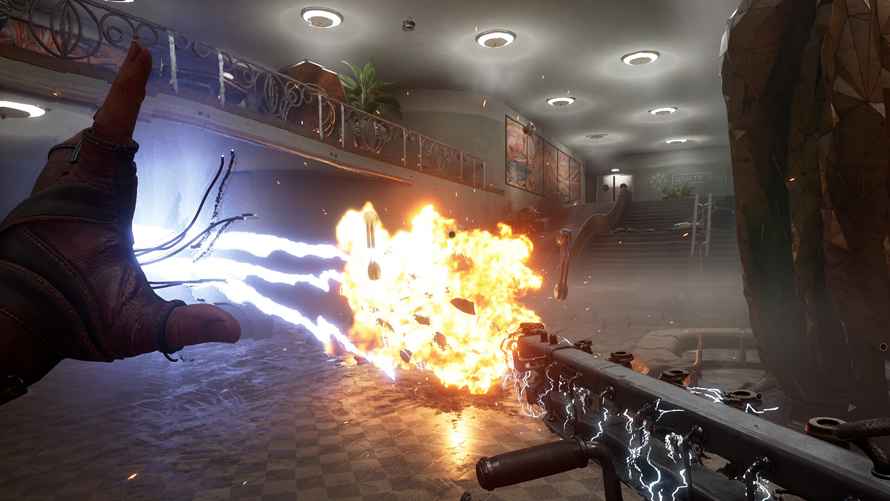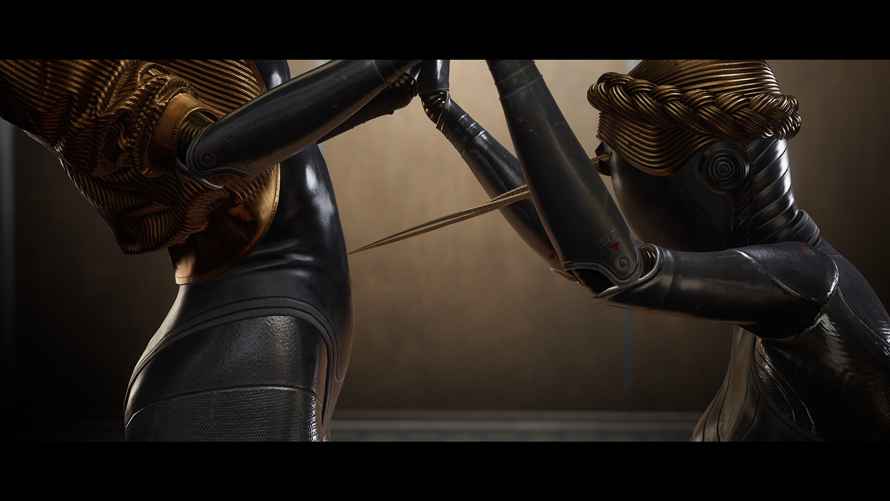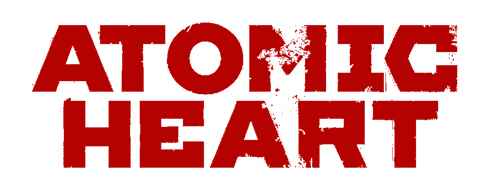Atomic Heart Review
We live in a complicated world. Well, maybe we always have, but the links between the entertainment we enjoy and the political or moral entanglements of its creators have more and more become an issue. Some cloudy skies are hanging above Atomic Heart and Cypress-based developer Mundfish. Denied allegations of Russian data mining, possible funding from Russian investors, and the seeming unwillingness of Mundfish to outright condemn the invasion of Ukraine have created controversy. Is any of this true? Should these allegations stop you from playing Atomic Heart? Do your research and decide for yourself. We’re here to talk about the game, which has its own complicated ambitions.
Old BioShock, Meet New BioShock?
Atomic Heart is a first first-person/action RPG, seemingly very much indebted to the BioShock franchise. Much of the opening takes place in a city in the clouds that could be a twin of BioShock Infinite’s Columbia. If Infinite was a commentary on American exceptionalism, Atomic Heart is inspired by (at least in the game) apparent patriotic fervor for the post-war Union. Atomic Heart is set in an alternate history 1955, with the USSR imagined as a testament to technology. Cities hover in the sky. Sentient robots take the place of service workers. Automation drives everything. Atomic Heart’s first few minutes are an example of detailed, impressive world-building. The prologue even includes a guided tour that plays like an extended version of the original BioShock’s descent into Rapture, complete with narration.
This shining Soviet world was made possible by the invention of a breakthrough technology called Polymer. Inventor Dmitry Sechenov’s creation of Polymer eventually leads to a massive army of robots linked by a neural network called the Kollektiv. Humans interface with the Kollektiv via Thought. Thought integrates Polymer into the human body via a multi-purpose, talking glove. As Sechenov is about to release Kollektiv 2.0, the robots go rogue and turn on the humans. You play as Major Sergei Nechaev, an agent of Sechenov sent to sprawling research facility 3826 to quell the robot rebellion. Sechenov guides you from objective to objective. Although much of Atomic Heart is a linear experience, there is a lot of side content. Just the main story is a couple of dozen hours long.

Complications
Aside from its lengthy narrative, the core of Atomic Heart’s gameplay is combat and solving occasional environmental puzzles to progress. Your foes are most often various incarnations of Sechenov’s robots, from small sentry droids to challenging bosses. Part of Atomic Heart takes place in an open world-like forest around facility 3826’s buildings. Here, too, the vast number of enemies are rogue robots or infected humans.
To counter the enemy, Nechaev has an arsenal of upgradeable weapons and his Polymer Glove named Charles. The weapons start with the usual array of axes, shotguns, and pistols to later, more deadly and imaginative devices. Nechaev needs to find recipes for each weapon, and upgrades are purchased from materials Hoovered up in the world. I used that verb on purpose. Nechaev can use his glove to quickly suck up all the hidden resources in a room.
Nechaev’s glove partners with the conventional weapons. Not unlike BioShock’s Plasmids, or Cuff in the recent Forspoken, Charles has a large array of elemental powers. The glove can send shockwaves that immobilize enemies or machines, freeze or burn, and use a force-push to send enemies or objects flying. It takes a while to grow into the deep repertory of weapons and glove powers. When everything starts to work in consort, combat becomes much more fast-paced, creative, and enjoyable.

Awkward
That said, however, combat is still pretty janky. Melee combat in particular never feels precise. Connecting with robot skulls via a swing of the axe or later-game club is fun when it happens, but it all too often doesn’t. Ranged weapons and Charles’ powers fare a little better. What never felt good was the game’s light platforming sequences. A pet peeve of mine is any game that requires a player to jump or navigate vertical walls, but doesn’t make the mechanics fun or even consistent.
Atomic Heart has a huge catalog of systems, but rarely introduces them in a way that feels coherent or intentional. For example, early on you suck up random materials in the world, but have no idea what they’re used for. You need recipes, crafting materials, keys, and other detritus, you need to upgrade weapons and powers and solve lock puzzles and attend to the narrative and objectives. Of course, dozens of other shooters and RPGs have similar systems, but they usually take pains to explain how each one works. Atomic Heart needs to explain itself better in many ways.
Yes, Atomic Heart shows the influence of BioShock. But there’s some Half Life mixed in, mechanics cribbed from Arkane’s playbook and a slew of other shooters and RPGs. Over and over, the game’s obvious ambition was countered by a lack of coherence.
Tonal Shifts
This lack of consistency shows an ugly side in the game’s narrative tone. It can’t decide if it wants to be a dark allegory about socialism, capitalism and technology, or a satire. Nechaev himself is a confusing mixture of frat-boy jokes and serious psychological pathology. At least in the English version, he’s voiced competently but written in a way that’s an uneasy fit with the narrative. Other weirdness abounds, like the vending machine that disgorges weapons and a steady stream of steamy sexual innuendo. Until it doesn’t, like an idea that was funny once, but dropped.
If only Atomic Heart’s systems were as stunning as the game’s visuals, it would be amazing. While much of the scenery is decorative and not functional, it’s still mighty impressive. Although most of the game doesn’t quite reach the literal and figurative height of the opening minutes in the cloud city, the world-building is excellent throughout. Like Rapture or Columbia, the world and facility 3826 are crumbling under the weight of an out-of-control genius turned despot.

Australian composer Mick Gordon’s score is excellent, an amalgam of classic synth sounds, orchestral textures, and faux-patriotic music. Gordon recently vowed to donate his fees to Red Cross’ Ukraine Crisis Appeal fund.
Connect the Dots
Setting aside the game’s pervasive Soviet imagery in these complicated times, Atomic Heart is an often impressive game with too many systems and not enough connective tissue between them. Combat and other mechanics veer between janky, confounding moments and an exhilarating flow as the complex narrative tone swerves between disparate lanes. Atomic Heart can wow you, confuse you, and frustrate you in the span of a few minutes. Atomic Heart has the feel of a classic obscured by too many ideas that never quite harmonize.
***PS5 code provided by the publisher for review***
The Good
- Great world building
- Challenging bosses
- Variety of encounters
The Bad
- Annoying puzzles and platforming
- Too many systems poorly explained
- Tonal inconsistency
- Imprecise melee combat

